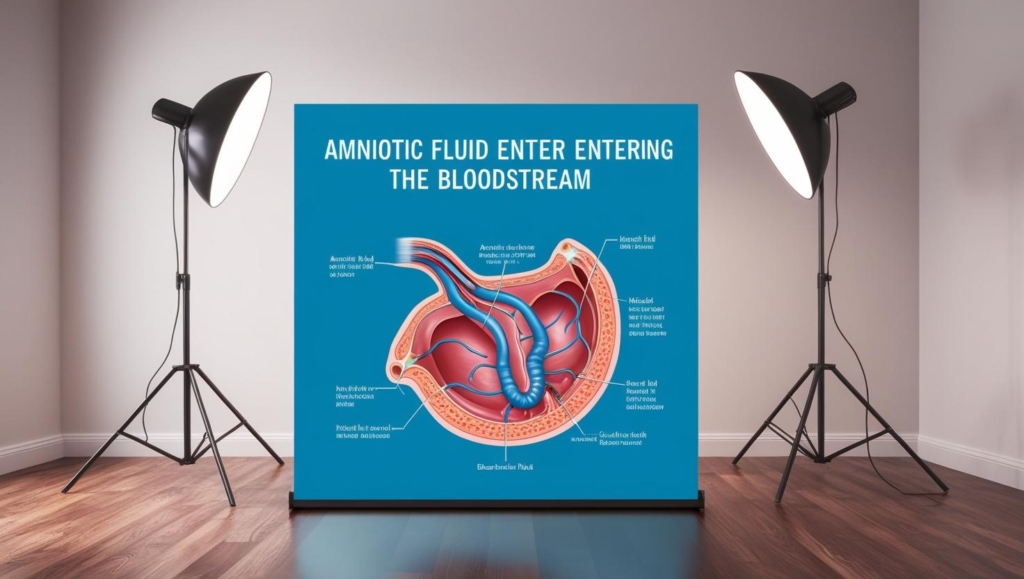A Rare Condition
Imagine the excitement and anticipation in a delivery room—a new life about to enter the world, hearts pounding with joy. For most, childbirth is a beautiful, safe experience. But in very rare cases, an unexpected complication called Amniotic Fluid Embolism (AFE) can occur, causing sudden distress to both mother and baby. While it’s a serious condition, it’s important to understand that AFE is extremely rare, and with advances in medical care, outcomes continue to improve.
Let’s explore what AFE is, how it’s managed, and why staying informed can help families and healthcare teams feel more empowered—not fearful.
What Is Amniotic Fluid Embolism?
Amniotic Fluid Embolism is a rare but life-threatening birth complication where amniotic fluid—or fetal material like cells or hair—enters the mother’s bloodstream. This can cause a severe reaction in the body, somewhat like an allergic response, which can lead to lung and heart failure or severe bleeding.
It usually happens during labor, delivery, or just after childbirth and often comes without warning. But again, let’s remember: this happens in about 1 in every 40,000 births, making it incredibly rare.

Why Does It Happen?
The exact cause isn’t fully understood, but some risk factors may include:
- Advanced maternal age
- Multiple pregnancies (twins, triplets, etc.)
- Placenta problems like placenta previa or abruption
- Cesarean or instrumental delivery
- Trauma during childbirth
Still, AFE can occur even when no risk factors are present. That’s why it’s considered unpredictable.
Signs and Symptoms
AFE usually develops suddenly and quickly. The most common early signs include:
- Sudden shortness of breath
- Drop in blood pressure
- Seizures
- Loss of consciousness
- Bleeding issues (disseminated intravascular coagulation)
This rapid onset is why quick recognition and emergency care are absolutely vital.

Treatment and Hope: What Happens Next
Despite how serious AFE sounds, survival rates have improved significantly thanks to fast response and critical care.
Here’s what typically happens when AFE is suspected:
- Emergency Response: Immediate delivery of the baby if it hasn’t occurred yet.
- Oxygen and Ventilation: To support breathing.
- IV Fluids and Medications: To stabilize blood pressure and heart function.
- Blood Transfusions: To address clotting problems and prevent shock.
- ICU Monitoring: For both the mother and baby if needed.
The key is speed and skilled care, and many mothers recover fully with time and rehabilitation.
Stories of Strength: Real Women, Real Recovery
There are powerful stories of mothers who faced AFE and made it through—thanks to quick action from their doctors and the miracles of modern medicine. These women remind us that even in rare, frightening situations, hope and healing are always possible.
Can AFE Be Prevented?
Because AFE is so rare and unpredictable, there’s no guaranteed way to prevent it. However, being in a hospital or birthing center with trained professionals increases the chances of fast treatment and a good outcome.
What you can do:
- Attend regular prenatal check-ups
- Discuss your birthing options and any risks with your doctor
- Stay informed and trust your care team
The Bottom Line: Stay Aware, Not Afraid
While Amniotic Fluid Embolism is serious, it is also extremely rare. Knowledge helps reduce fear. With compassionate medical teams, better awareness, and continuing advancements in care, mothers and babies have every reason to expect safe and joyful births.
If you or someone you love has experienced AFE, know that you’re not alone. Support groups and resources exist to help families heal, share stories, and celebrate recovery.
Sources:
- Mayo Clinic – Amniotic Fluid Embolism Overview
- Cleveland Clinic – AFE Medical Information
- National Institutes of Health – AFE Studies and Research






